LATA MANGESHKAR: BIOGRAPHY, SONGS, AND MUSIC VIDEOS
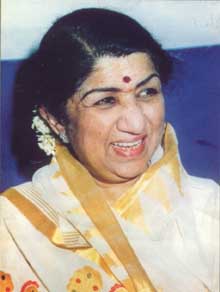
Lata Mangeshkar (circa 1990)
Lata Mangeshkar is India's most well known playback singer. She has sung in all the major Indian languages and is one of the most recorded artists in the world.
Childhood
Lata Mangeshkar was born on September 28, 1929 in Indore, Madhya Pradesh into a Maharashtrian Brahmin household. Her father was Dinanath Mangeshkar and her mother was named Shudhmati.
Lata was the oldest of several children. She had a younger brother named Hridayanath Mangeshkar, as well as three younger sisters named Asha (Bhosle), Usha and Meena. (Of these Asha Bhosle would grow up to rival Lata in the world of film music.)
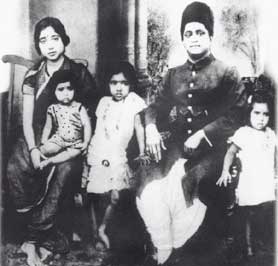
Lata Mangeshkar and family
Her exposure to music began in infancy. Her father Dinanath was an accompanied classical vocalist and was very active in the theatre. It is said that Lata made her acting debut at the age of five in a play in which her father was participating.
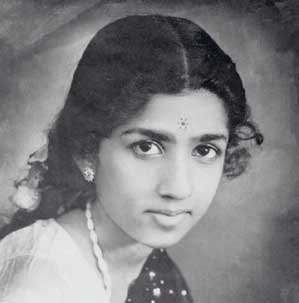
Lata as a young girl
Lata's musical studies were not limited to hearing her father sing. She also studied under Aman Ali Khan, and later under Amanat Khan, and acquired a good background in classical music.
Early Career
Lata's early film career was characterized by numerous changes in direction, false starts, and a general unsteadiness. It was not at all clear that she was destined to be a successful singer.
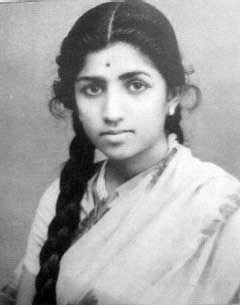
Lata Mangeshakar as a girl
1942 proved to be a very crucial year in her life. This was the year that the film "Kit Haaal" was release. This was the first film that Lata recorded for; unfortunately her song would be cut and not make it to the finished version. More traumatically for the young Lata, is that this was the year that her father died of a heart attack.
Lata was only 13 years old when her father died, but as the oldest child, responsibility fell upon her to help take care of her families financial needs. She took to acting in small films in order to do this. Her first appearance was a very small role in Pahili Mangalagaur (1942). Later she acted in such films as "Maajhe Baal" (1944), "Chimukla Sansar" (1943), "Gajabhau" (1944), "Jeevan Yatra" (1946), "Badi Maa" (1945).
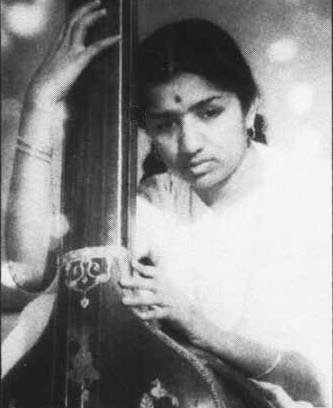
The period in the early 40's did not look promising for Lata. Her thin voice was very different from the heavier voice quality that was in vogue (e.g., Noor Jahan). She received numerous rejections. It was not until 1947 that she was able to get a toehold in the industry by singing "Pa Lagoon Kar Jori Re" in the film "Aap ke Sewa Main" (1947). Lata sang several songs in other films over the next few years, but her first big hit was in 1949 with "Aayega Aanewaala".
There is no doubt that the partition played a role in Lata's rise to fame. During the partition, there was a disruption when many directors, producers and artists left Bombay, while others migrated to India from Lahore. One of the most notable artists to leave India, was Noor Jahan, who was the undisputed queen of the filmsong at the time. This disruption opened the doors to Lata in an industry that previously may have been harder to get into.
As the 1950's began, Lata was firmly established as a film singer. Music directors she sang for included such greats as Shankar-Jaikishan, and Anil Biswas. During this period, "Mahal", "Barsaat", "Ek Thi Ladki" and "Badi Bahen" were just some of the famous films that used her voice.
Lata's Peak
The next three decades would see Lata Mangeshkar reign as the undisputed queen of the Hindi film song. She sang with almost all of the major music directors, and acquired a considerable clout in the politics of the film industry.
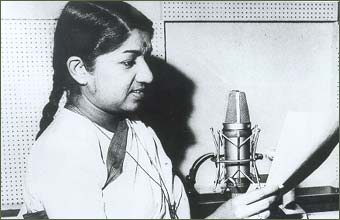
Lata Mangeshkar in recording session
It is pointless to try and enumerate the songs that she did; however, there are a few songs which stand out. In particular "O Sajna Barkha Bahaar Aayee" from Parakh (1960), "Aaja re Pardesi" from Madhumati (1958), "Itna na Mujhse Tu Pyaar Badhaa" from Chhaya (1961), "Allah Tero Naam" from "Hum Dono" (1961), "Ehsaan Tera Hoga Mujh par" from "Junglee" (1961), and "Yeh Sama" from "Jab Jab Phool Khile" (1965), seem particularly notable.
Lata also worked with most of the major music directors in this period. Her work with, both S.D. Burman and R.D. Burman were very fruitful. She also worked with, Shankar /Jaikishan, Salil Chowdhury, Naushad and a host of others. It is often said that her best work came with her songs for Madan Mohan and C. Ramchandra. It is interesting to note that O.P. Nayyar was one of the few major music directors to not utilize her talents.
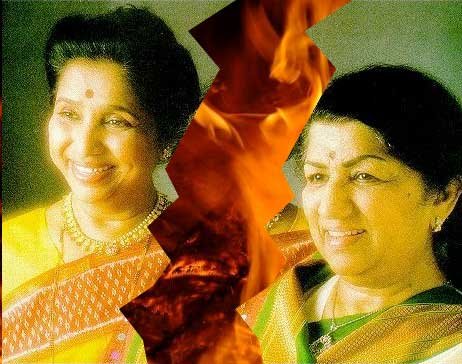
Lata / Asha professional rivalry
However Lata's reign was not always a smooth one. There was the well known professional rivalry with her sister Asha Bhosle. For some years she would not sing with Mohd. Rafi due to a long standing dispute over royalties. For some years she would not work with the music director S.D. Burman. During the peak of her career, she had a tremendous political clout within the film industry and is known to have exercised this freely; this created ill will in many quarters.
Lata's Decline
All things come to and end, and Lata's professional career was no exception. Over the decades, the actresses for whom she was singing became younger, and Lata was growing older. It was inevitable that at some point it was no longer going to be a workable match.
We cannot pinpoint a time where her career started to decline. However by 1980 it was clear that it was not a necessity to have Lata sing for a film. Furthermore, there was a change in the style of the new songs. Emerging music directors such as A.R. Rahman just did not see Lata's voice as fitting into their approach to creating music (although Lata did lend her voice for some of his work). The result of all of this was that Lata Mangeshkar gradually moved from the peak of her career into today's state of semiretirement.
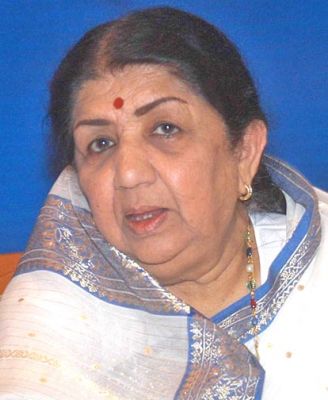
Lata Mangeshkar in her later years
Never-the-less, this period shows some of Lata's most interesting work. Songs such as "Sun Sahiba Sun" ("Teri Ganga Maili" - 1986), "Yaara Seeli Seeli" ("Lekin" - 1990), even today stand our as some of her most memorable work.
In 2001 Lata Mangeshkar was awarded India's highest civilian honor the "Bharat Ratna",
Lata's Last Days
On January 8, 2022 Lata Mangeshkar tested positive for COVID-19. Her condition worsened and she was admitted to the hospitalon January 11th. Her condition was very serious, so she was placed on a ventilator. Her condition improved and on January 28th she was taken off the ventilator. But her condition again declined. She was put back on life support, but to no avail.
Lata Mangeshkar passed away on Feb 6, 2022 at the age of 92.
Lata Mangeshkar was a national figure; therefore her funeral was befitting one of her stature. The Government of India declared two days of national morning. Flags flew at half-mast on Feb 6th and 7th. Her body was cremated with full state honours in Shivaji Park in Mumbai.
Selected Video
© 1998 - 2021 David and Chandrakantha Courtney
For comments, corrections, and suggestions, kindly contact David Courtney at [email protected]
